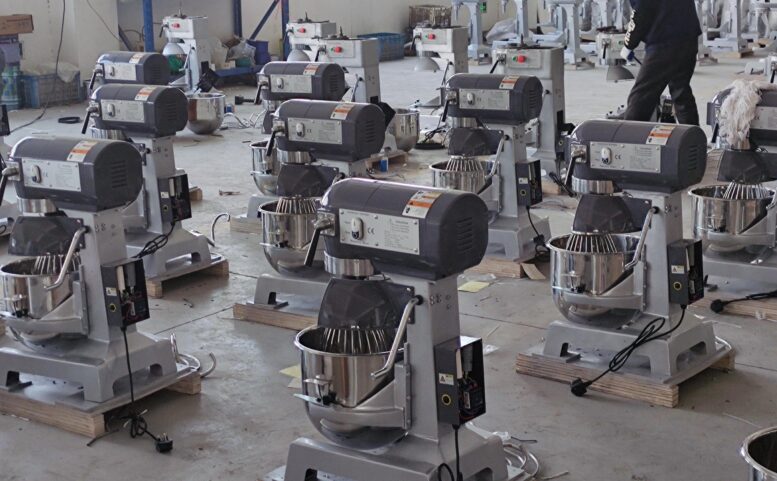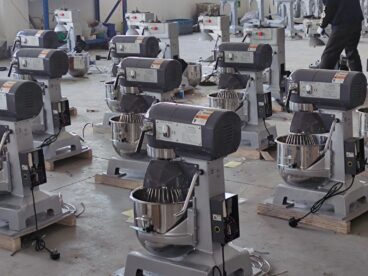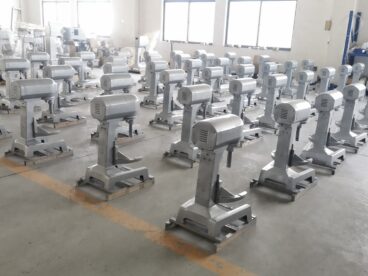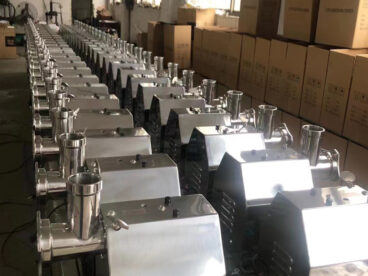Introduction: Why Stand Mixer Safety Matters
Stand mixers are incredibly useful kitchen appliances, streamlining tasks such as mixing dough, whipping cream, and kneading batter. Their efficiency and versatility make them indispensable in both professional kitchens and home settings. However, like any electrical appliance, stand mixers come with their own set of risks. Improper handling or a lack of attention to safety protocols can result in accidents, injuries, or even damage to the appliance itself. Ensuring the safe operation of your stand mixer is not only essential for your safety but also extends the longevity of the device. In this post, we will cover the most important stand mixer safety tips, from the initial setup to regular maintenance, to help you get the most out of your mixer while minimizing risks.
1. Read the User Manual Thoroughly
Before you even plug in your stand mixer, it is essential to read the user manual carefully. Every stand mixer model comes with unique features, specifications, and safety recommendations. The manual will provide you with essential instructions on how to assemble the mixer, use its attachments correctly, and understand its various functions. Beyond operational guidance, the manual often contains vital safety warnings, such as not overloading the mixer or not using it for certain tasks beyond its capacity. By taking the time to understand your mixer’s design and safety requirements, you ensure that you are using it according to manufacturer guidelines, which can help prevent accidents and maintain the warranty.
Moreover, many manuals provide troubleshooting tips and maintenance advice that are crucial for the long-term health of the appliance. In case something goes wrong, having a good understanding of the manual will help you identify the problem and either solve it yourself or seek professional help promptly. While it might seem like an extra step, reading the manual is one of the simplest ways to safeguard both yourself and your stand mixer.
2. Use the Mixer on a Stable, Flat Surface
One of the simplest safety precautions for stand mixers is ensuring that they are placed on a stable, flat surface before use. When the mixer is placed on an uneven surface, it can become unstable during operation, especially when mixing at higher speeds or when kneading dough. This instability increases the risk of the mixer tipping over, potentially causing injury or damage to both the appliance and the surrounding area. A sturdy, flat countertop provides the necessary support to keep the mixer securely in place during operation.
In addition to stability, the surface should be free from any grease, water, or crumbs. A wet or slippery surface can cause the mixer to slide around, increasing the risk of accidents. It is also advisable to ensure that the mixer is positioned far enough from the edge of the counter to avoid accidental knocks that could send it tumbling. For those with limited counter space, consider using a non-slip mat beneath the mixer to prevent movement and keep it securely in place while you work. By taking these simple measures, you help protect both yourself and your appliance from unnecessary risks.
3. Never Leave the Mixer Unattended While Running
It might be tempting to leave your stand mixer running while you go about other tasks, but this is a dangerous habit that should be avoided at all costs. Stand mixers are powerful machines, and even though they are designed to run for extended periods, leaving them unattended can lead to several risks. For one, prolonged operation can cause the motor to overheat, particularly if the mixer is working on tough tasks like heavy dough mixing. Overheating may damage the internal components of the machine, leading to costly repairs or permanent malfunction.
Additionally, leaving the mixer running without supervision increases the likelihood of accidents. If something goes wrong—such as the attachment coming loose or the bowl shifting—it may be hard to intervene in time. Accidental spills of ingredients or an overflowing bowl can create a messy and potentially hazardous environment, especially if the mixture contains hot liquids or sticky substances. To ensure your safety, always stay in the kitchen and monitor the stand mixer while it’s in use. If you need to step away for any reason, turn off the mixer and unplug it before leaving the room. This will not only prevent potential accidents but also prolong the lifespan of the appliance.
4. Use the Correct Attachments for Each Task
Stand mixers often come with a variety of attachments designed for specific tasks, such as a whisk for beating egg whites, a dough hook for kneading bread, and a paddle for general mixing. It is crucial to use the right attachment for the job to avoid unnecessary strain on the motor or the mixer’s other components. For example, using a whisk to mix thick dough can overload the motor, while using a dough hook to beat light ingredients can lead to poor results and potential damage to the mixer. Always refer to the user manual for guidance on which attachment to use for various tasks.
Furthermore, attachments must be securely attached before you start mixing. Loose or improperly fitted attachments can cause the mixer to malfunction or even cause injury. Always check that the attachment is firmly in place before turning on the mixer. It is also a good practice to clean attachments after each use to prevent the buildup of food debris, which could affect their performance and hygiene. Proper attachment use ensures that the mixer functions efficiently while also minimizing the risk of malfunctions and safety hazards.
5. Be Mindful of Moving Parts
Stand mixers have several moving parts, including the beaters, dough hooks, and whisks, that operate at high speeds. These moving parts are designed to make your tasks easier, but they also pose a significant safety risk if they come into contact with your hands or any other objects. One of the most important safety tips is never to insert your hands or utensils into the mixing bowl while the mixer is running. Doing so can result in severe injuries, as the rapidly moving parts can cause cuts, bruises, or even broken bones in extreme cases.
Even when the mixer is off, always ensure that the beaters or other attachments are stationary before making any adjustments. If you need to scrape the bowl or remove ingredients, always turn off the mixer first and wait until the moving parts come to a complete stop. Some mixers also feature a safety switch that prevents the motor from running unless the bowl and attachments are properly locked in place. This built-in safety mechanism helps reduce the risk of injury, but it’s still essential to exercise caution around the mixer’s moving parts.
6. Monitor the Electrical Components
Electrical safety is crucial when using any kitchen appliance, and a stand mixer is no exception. Before each use, check the power cord for any visible damage, such as fraying or exposed wires. A damaged cord can lead to electrical shocks or even fires, especially when the mixer is running for long periods. If the cord is damaged, do not use the mixer and have it repaired or replaced immediately.
It is also important to plug the mixer directly into a grounded outlet. Avoid using extension cords or power strips, as these can increase the risk of electrical malfunctions or fires. Always unplug the mixer when not in use to prevent any electrical accidents. Additionally, keep the power cord away from hot surfaces or water to avoid the risk of burns or electrical shocks. By following proper electrical safety practices, you can help ensure the safe and reliable operation of your stand mixer.
7. Clean and Maintain Your Mixer Regularly
Cleaning and maintenance are essential for the safe and efficient operation of your stand mixer. After each use, detach the beaters, whisk, and other attachments, and wash them thoroughly. Food particles left behind on attachments can affect their performance and may even cause them to wear out prematurely. For the mixer base, wipe it down with a damp cloth, being careful not to allow moisture to get into the motor or electrical components.
Regularly inspect the mixer for signs of wear and tear, such as cracks in the bowl or loose parts. If the mixer is making strange noises, overheating, or experiencing performance issues, stop using it immediately and address the problem. Many stand mixers require periodic lubrication of certain parts to keep them running smoothly, so refer to the manual for specific maintenance recommendations. By maintaining your stand mixer in good condition, you not only ensure its longevity but also prevent accidents caused by malfunctioning equipment.






